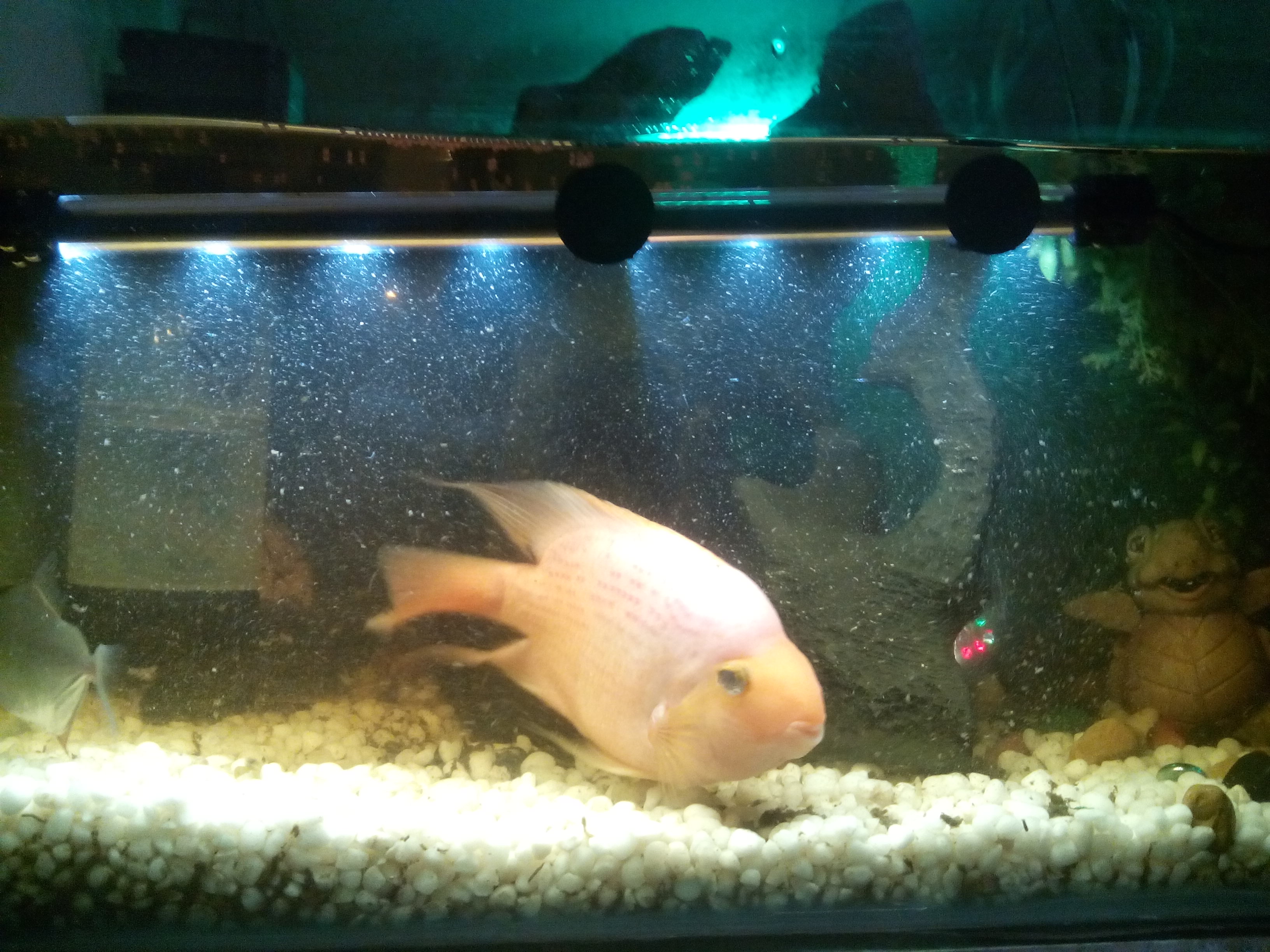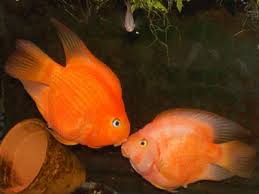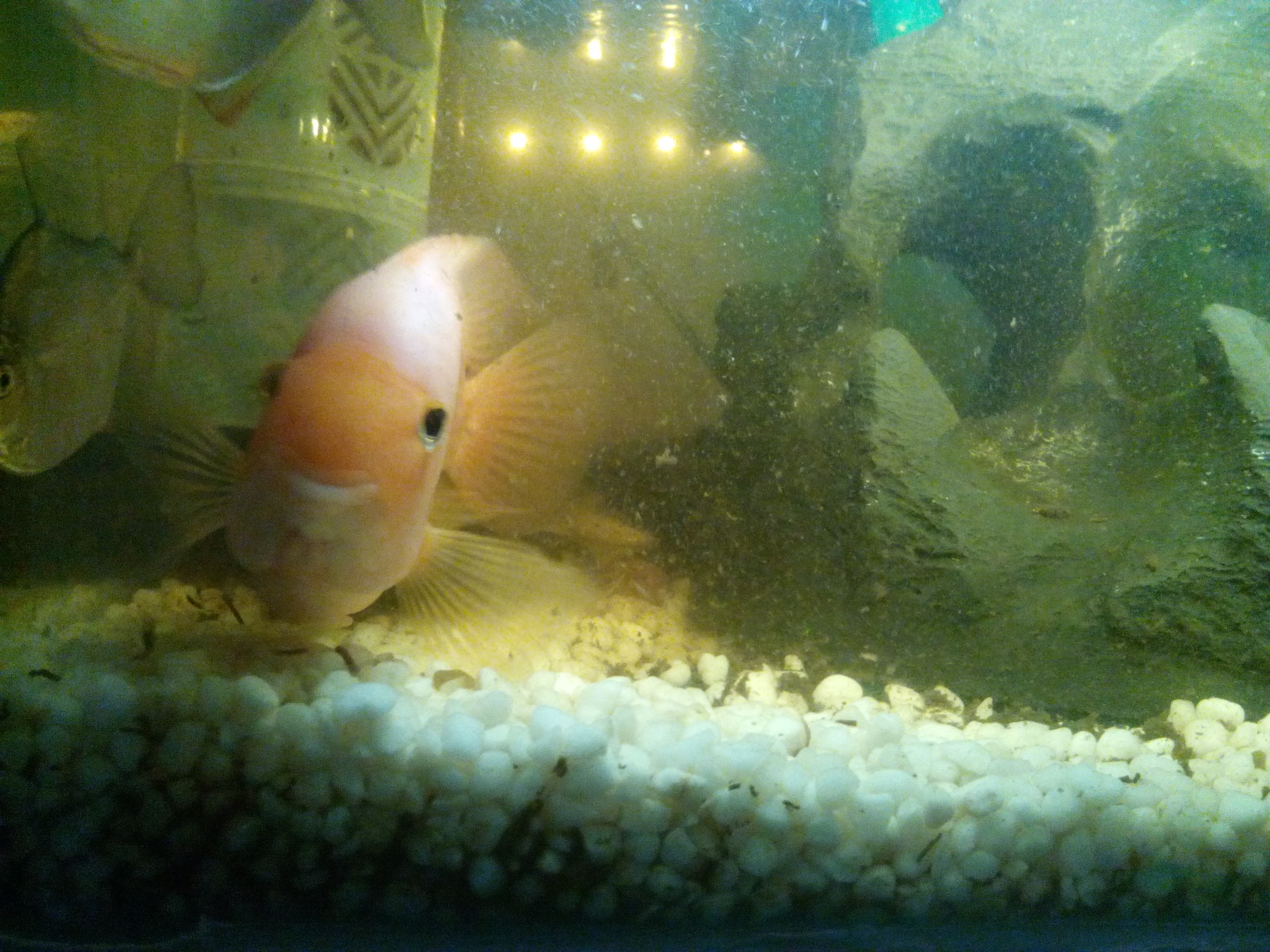How Often Should You Feed Blood Parrot Fish
Which Fish Food is Best for Aquarium Parrot Fishes?

Feeding the right kind of food in the right amounts is equally important along with optimum water habitat for the health and longevity of your pet fishes. Blood Parrot Fish is a popular aquarium fish but not much is known about its distinctive origin and behaviour; knowledge of these aspects is also important in order to ensure well-being of the fish.

Blood Parrot Cichlid is known by many names – Red Parrot Cichlid, Bloody Parrot, Red Parrot Fish or Parrot Fish. It should not be confused with Hoplarchus Psittacus which is also called a Parrot Fish. The Blood Parrot fish which is being referred to here has round body, large eyes and can grow up to 8 inches and more when adult. It has got a protruding beak shaped head and a distinctive mouth which doesn't close and appears to be smiling. Blood Parrot normally chews or crushes its food by its strong throat muscles. Coloured mostly in bright orange, one can find Blood Parrots in various shades of red, purple, gray, yellow, blue and green. The fish enjoys a good average life span of over 3-12 years.
What to feed your aquarium Parrot fishes and how much?

[Image Source: parrotcichlid.com ]
Parrot Cichlid or parrot fish is rapidly becoming popular with Aquarium Hobbyists in India but is actually a man-made breed of fish and although its exact parentage is unclear, it appears to be a hybrid between Midas Cichlid and Redhead Cichlid. Being of human fancy, this exotic fish doesn't have a natural environment of its own but it shares a few qualities with its parent species. Midas and redhead are omnivores, and thus their offspring is also an omnivore and can eat different kinds of live, flake, frozen and freeze dried foods.
A good Blood Parrot Fish diet should consists of a high quality fish food pellets or flakes formulated for cichlids. Brine shrimp (live or frozen) or blood worms are greatly relished by the fish and can be offered as treat from time to time to supply important nutrients without making them sick. Sinking pellets or food bits are easier to eat and hence suitable food type.
What to look for when buying fish food?
B-carotene and canthaxanthin helps to maintain the beauty of the vibrant colours. Hence foods rich in these elements should also find space in their diet. One can feed two or three times a day, on fixed timings, taking care not to overfeed. A good thumb rule to follow is that amount of food your fish can eat in 3-4 minutes is also the right dosage.
Ideal Tank mates
Apart from the food, the type of tank mates a Parrot Fish should have is also important to consider.
But first one should know about their basic nature:
Parrot Cichlids though at first are shy and at nature, especially in the early years of their lives but once accustomed to the aquatic surroundings can become very responsive. A hobbyist has even claimed to be massaging his parrot fish every day he comes back from work. See the viral fish video!
It takes time for them to adjust to their surroundings. Ensure that proper hiding spots are available, by installing aquarium decorations, aquarium plants and the like, so that the fish can relieve itself and gets familiar with the environment gradually. Getting well-adjusted, the fish will eventually behave like an underwater puppy dog who begs for food every time you pass by the tank.

Having a mixed parentage somehow also mixes the personality traits with the result that some of the fish are docile and some are a little aggressive. So the selection between a community tank and semi-aggressive tank would depend on their individual behaviour. To be on a safer side, a semi-aggressive tank can be chosen and observed.
Similarly sized fish or fish slightly smaller (exclude delicate breeds of fish) such as mid-size Tetras, Severums, any catfish, Fresh Water Aquarium fishes like the Silver Dollar and Oscars make good co-inhabitants in a community fish tank. A small community tank is not usually a good choice due to the territorial nature of the Blood Parrot.
Types of Parrot Cichlids
Blood Parrots have the following popular kinds:
1. Red Blood Parrot– The most common parrot cichlids to be found in aquariums is the Red Blood Parrot. Their name doesn't truly represent their true colour; usually Red Bloods are gold-orange in colour. Males can be identified by a slight hint of pink on the throat and at the back of the head. Red Blood Parrot can extend up to 10 inches in length.
2. Purple Blood Parrot– Second in the line of popularity appears to be the Purple Blood Parrot which again is not exactly purple in hue. It possesses a gleaming red colour which assumes a deeper shade at some parts of the body and that seems purple.
3. Love Heart Parrot– This parrot cichlid comes with a more than little variation. It has got no tail and that gives it an overall heart-like shape. Love Heart can be found in both red and purple versions.
Fish Aquarium is the most serene representation of underwater nature that can be infused inside our homes and a community fish tank with a red parrot and a couple of Silver Dollars is sure to brighten you up everyday.
Source: https://www.petsworld.in/blog/which-fish-food-is-best-for-aquarium-parrot-fishes.html

0 Response to "How Often Should You Feed Blood Parrot Fish"
Post a Comment